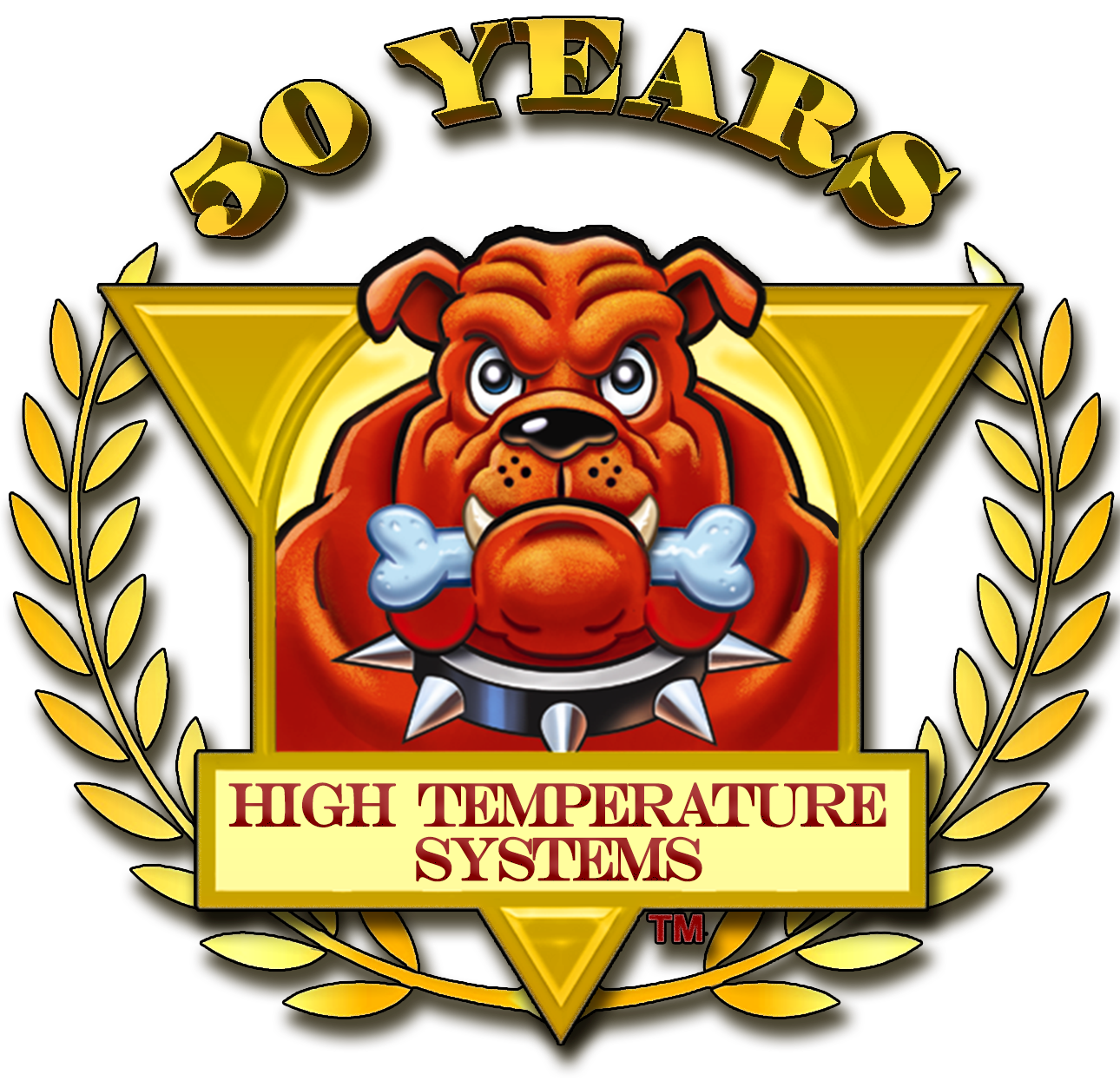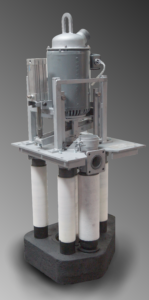Circulate Continuously - Transfer on Demand
Chameleon Series Aluminum Pumps
Chameleon Series Pump
Circulate Continuously - Transfer on Demand
Customized to Your Application
PLC Controlled for Dependable Operation
Patented Dual Volute Technology
Patented Removable Riser
Patented High Volume Impeller
Well Size Limitations No Longer Drive Compromise
A recent survey of installed aluminum reverb furnaces found that most included a pump well only large enough for a properly sized circulation pump. With manufacturing floor space at a premium and furnace prices increasing, it is no surprise that the pump well would be kept to an absolute minimum. There is also an ongoing debate between furnace builders and their customers regarding the nominal circulation rate for a reverb furnace and the impact of circulation on energy efficiency and melt rates. Circulation rate is typically described as turnover per hour, and nominal number ranges from 3 to 15 turnovers per hour. In the past, reverb furnaces were designed to accommodate a pump to support 3 to 6 turnovers per hour. End users of the furnaces have discovered through trial and error that higher melt rates and higher overall furnace efficiency can be had at higher turnovers such as 6 to 10. Some users have reported 30% higher melt rates with 9 or more turnovers per hour. For these reasons, High Temperature Systems, Inc. long ago designed a wide range if high efficiency pumps to bring higher circulation rates to reverb furnaces with smaller pump well sizes. These pumps are well known in the industry for providing the highest flow rates with the smallest footprint.
Circulation or Transfer Trade-Off
Unfortunately, pump well size limitations can drive reverb furnace users to difficult decisions like forgoing the use of a transfer pump. The use of a transfer pump, as compared to manual "tap-out", results in substantial labor savings. As an example, one customer with several furnaces reports that the use of transfer pumps in their reverb furnaces results in a savings equivalent to four additional skilled workers.
While the value proposition for the transfer pump application is impressive, it pales in comparison to the added efficiency of circulation. For an operation limited by furnace melt rates, the additional cost of manual tap-out is the best compromise while keeping the circulation pump in place and at high flow. However, for the cost limited operation, it may well make sense to sacrifice furnace efficiency by using a smaller circulation pump to make room for the transfer pump in the pump well, even if the transfer pump is small as well.
Maintenance Challenges Reduced
Molten metal pump maintenance best practices include removing dross accumulation from the pump posts, riser, and shaft as well as clearing induction paths in the pump base. These procedures should typically be performed every shift or, at least, every 12 hours. Proper maintenance requires the pump to be lifted at least part way out of the melt. As small or crowded pump well makes proper maintenance more difficult and time-consuming. Depending on the design of the reverb furnace, access to the pump posts, risers, and shafts may be impaired. Also, lowering the pumps back into place, is made difficult by the immediate proximity of the pump bases. Without proper maintenance, the pump components will wear faster and require replacement sooner, leading to increasing furnace downtime and higher maintenance costs.
No Compromises with Dual Volute Patented Technology
The ideal solution for these furnaces would be a single compact pump that performs both the circulation function and the transfer function. Such a pump would require a mechanism to redirect the output of the pump impeller to either a circulation nozzle or a transfer riser. Molten aluminum valve mechanisms have proven to be unreliable as compared to the typical reliability of the molten metal pump. The mismatch in reliability makes this concept prohibitive. High Temperature Systems, Inc. met this challenge with a patented multiple volute pump design. Rather than using a valve, the pump base includes two volutes. The volute is the part of the base that captures and guides the output of the impeller to it's intermediate destination. One volute feeds the circulation nozzle while the other volute feeds the transfer riser. The impeller is simply moved from the circulation volute up to the transfer volute on command to perform a metal transfer. As the transfer is complete, the impeller is lower back into the circulation volute. The impeller position can be controlled to choose between circulation and transfer via a programmable logic controller (PLC) and a simple human-machine interface. The PLC also manages the motor speed control to ensure a smooth transition between modes.
The Chameleon Series Pump
The Chameleon Series Pump solves the problem of the small pump well. The Chameleon is a single high-efficiency pump that provides 6 to 10 turnovers per hour as well as fast and efficient transfer capabilities. Fewer parts, easier maintenance, better overall furnace efficiency. It is time to stop compromising and give High Temperature System, Inc. a call. We can assess your current furnace setup, spec the nominal Chameleon pump system, and assist in the startup.


